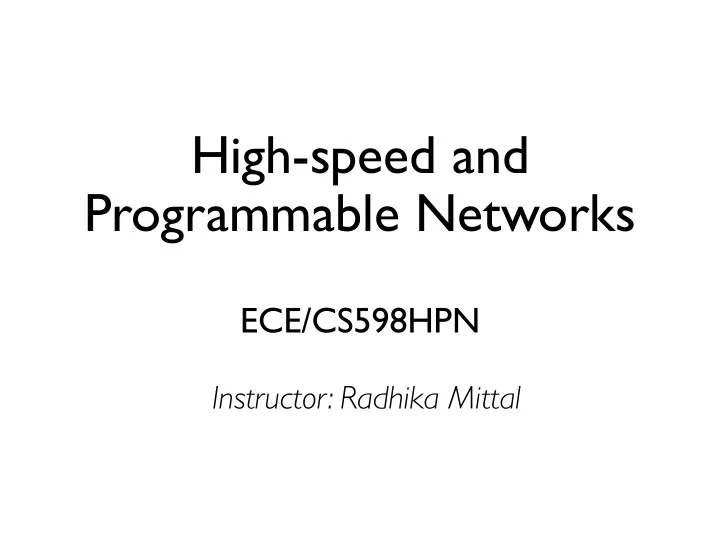

High-speed and Programmable Networks ECE/CS598HPN Instructor: Radhika Mittal
History of Internet 1876: Alexander Graham Bell invented telephone.
History of Internet 1876: Alexander Graham Bell invented telephone. Such a design cannot scale!
History of Internet Soon evolved to Public Switched Telephone Network. Earliest circuit-switched network!
History of Internet Soon evolved to Public Switched Telephone Network. Strowger’s competitor’s wife Earliest circuit-switched network!
History of Internet 1889: AB Strowger invents first mechanical circuit switch. Strowger’s competitor’s wife Earliest circuit-switched network!
History of Internet 1889: AB Strowger invents first mechanical circuit switch. Earliest mechanical circuit-switched network!
History of Internet 1889: AB Strowger invents first mechanical circuit switch. Earliest mechanical circuit-switched network!
History of Internet 1889: AB Strowger invents first mechanical circuit switch. X X Circuit switching is wasteful!
History of Internet Packet switching is designed: 1959(Paul Baran), 1961(Leonard Kleinrock), 1965 (Donald Davies).
History of Internet • Simultaneously, growing interest in connecting computers. • Lawrence Roberts meets Davies’ teammate at 1967 SOSP , and decides to use packet-switching for a network to connect computers. • Roberts, Davies, Kleinrock, and Baran get together to design ARPANET.
History of Internet 1965: Two computers in MIT communicate using packet-switching. 1969: ARPANET is developed.
History of Internet Early1970’s: Vint Cerf develops NCP for transport and addressing.
History of Internet 1973: European nodes added to ARPANET. The term Internet is born.
History of Internet • mid-1970’s: Vint Cerf and Bob Kahn develop TCP/IP , separating reliability from addressing. • 1983: NCP becomes obsolete; all nodes switch to TCP/IP . • Late 1970’s: Adaptive routing protocols were developed. • 1986: Series of congestion collapse; congestion control added to TCP . • More interconnected networks emerge (Internet grows). o Early 1990’s: BGP introduced for inter-domain routing.
Since then…. • No fundamental change in how we operate and use networks. o Distributed management of hardware switches. o Packet switching with store-and-forward design. o Endhost implements a TCP/IP stack in the kernel. • Innovations in: o Transmission technology: wireless, cellular, more bandwidth. o Applications: HTTP , TLS, SSL, DNS. o Specific details: Congestion control algorithms, hierarchical addressing, etc.
But, changes have emerged in the last decade... This course tells the story of these changes.
Key enablers of the changes • Increasing scale: • greater need to make networks easier to manage . • More functionality: • greater need to make networks more evolvable . • Commercialization: • greater emphasis on performance.
Key enablers of the changes Emergence of large private networks.
In this course… • What changes have been made to the networking infrastructure in the last decade? • Why were the changes introduced? • What do these changes enable?
In this course… • Week 1: Review relevant concepts. • Week 2: Historical perspective. • Week 3-7: Switching infrastructure. • Week 7-11: Endhost infrastructure. • Week 12: Middleboxes.
Questions? https://courses.engr.illinois.edu/ece598hpn/fa2019/ https://courses.engr.illinois.edu/cs598hpn/fa2019/
Recommend
More recommend